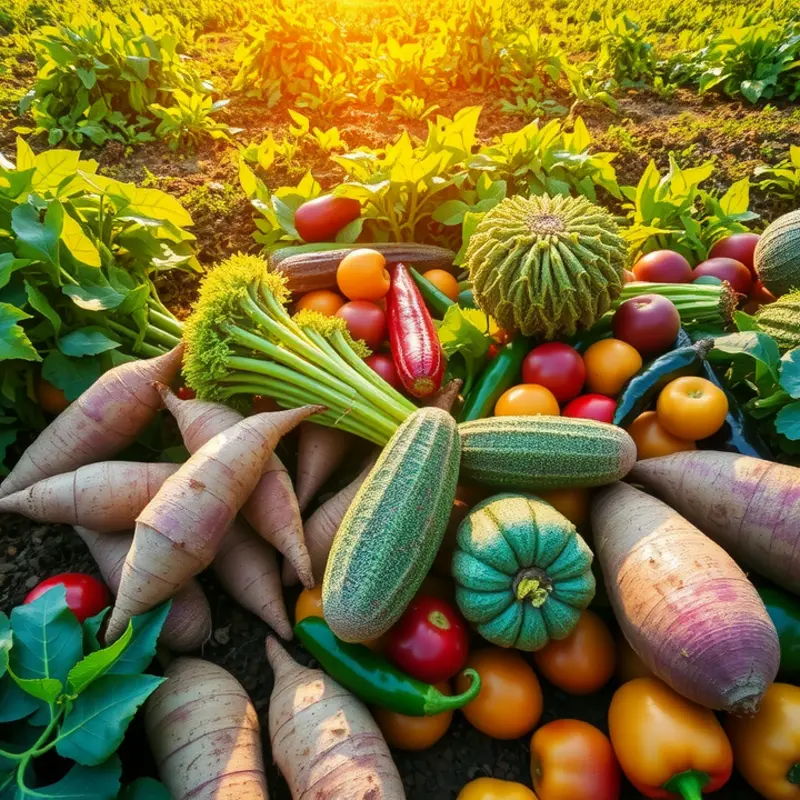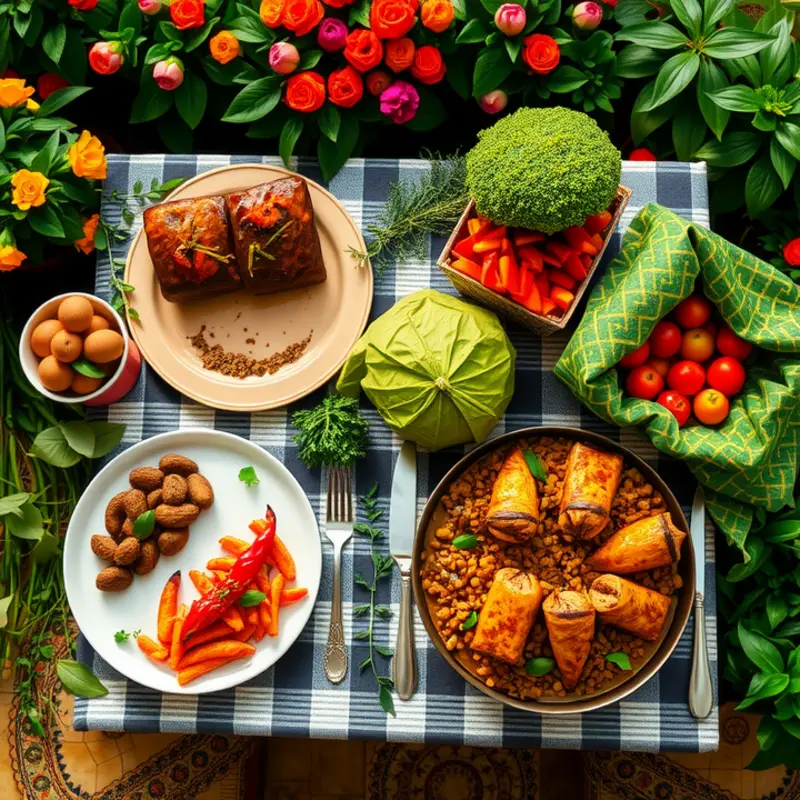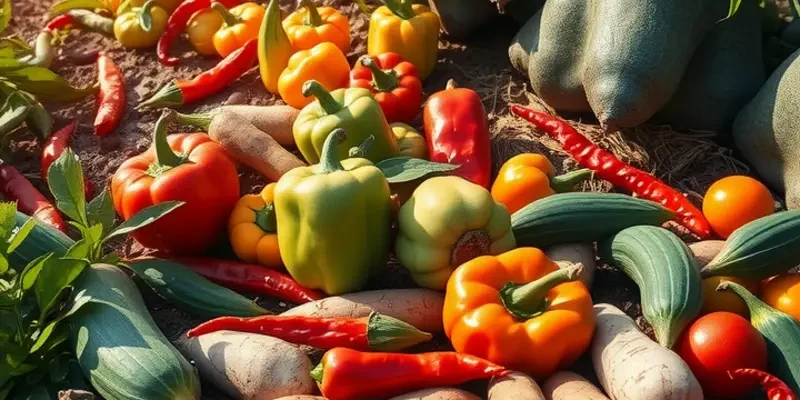West African cuisine is a delightful tapestry woven from rich traditions, diverse ingredients, and vibrant communal dining experiences. The culinary practices across this region reveal a deep connection to history, environment, and culture. Spice markets, cooking methods, and the use of locally sourced ingredients not only highlight the flavors of West Africa but also tell stories of the communities that thrive on them. As we journey through the unique dishes and remarkable traditions that define this food culture, we can uncover the heart and soul of West African gastronomy.
The Foundations of Flavor: Ingredients and Techniques

West African cuisine is a celebration of bold and diverse flavors, anchored in a selection of essential ingredients that have been indispensable for generations. Among these staples, rice and yams stand out as fundamental components of many traditional dishes. Rice, particularly in forms like aromatic jollof rice, serves as a canvas for a myriad of spices and accompaniments. Yams, on the other hand, provide both sustenance and versatility—mashed into the famous fufu or simply boiled and spiced.
Another cornerstone of West African cooking is okra. This humble vegetable is indispensable in soups and stews, offering a slightly viscous texture that thickens and enriches broths. Okra’s unique flavor profile pairs perfectly with tomatoes, onions, and proteins like fish or chicken, creating hearty dishes that are both comforting and nutritious.
Pepper, especially the hot varieties such as Scotch bonnet, is a fiery thread that weaves through the tapestry of West African flavor. These peppers not only add heat but also complexity, enhancing dishes with a bright, fruity undertone. The judicious use of spices, including ginger, garlic, and an array of herbal blends, ensures that every meal is a vibrant, aromatic experience.
The cooking techniques employed in West African kitchens are as vital as the ingredients themselves. Steaming is one such method, used to delicately cook grains and tubers while preserving their nutritional value. Frying, often in palm or groundnut oil, imparts a rich and savory depth to dishes. This technique is prevalent in creating crispy snacks and light, flaky pastries.
Slow cooking, a practice that transforms tough cuts of meat into tender delights, is central to many beloved recipes. It allows flavors to meld and intensify, resulting in the deep, layered tastes characteristic of dishes like egusi soup or maafe. These methods not only honor the ingredients but also respect the nutritional value inherent in each component.
The integrity of West African food culture is found in its ability to use local produce sustainably. Embracing this approach can lead to a more eco-friendly kitchen, reducing waste and emphasizing the full utilization of each ingredient. If you are interested in discovering more about sustainable cooking techniques that respect the environment, consider exploring these low-waste cooking prep ideas.
Each dish, prepared with care and attention to detail, tells the story of a community. The wisdom shared through generations not only maintains traditions but also invites adaptation and creativity. As you delve into this rich culinary journey, remember that the essence of West African cooking lies in its authenticity and its commitment to flavors that resonate with history and heart.
Celebratory Feasts: Communal Dining and Traditions

In West Africa, the vibrancy of communal dining establishes a cornerstone of cultural identity. It’s a dynamic scene, where meals like jollof rice, egusi soup, and fufu partake in a symphony of flavors and vibrant connections. These gatherings transcend the mundane; they are infused with the spirit of togetherness, where music, storytelling, and laughter enrich every bite.
Jollof rice is a staple across the region, embodying a rich blend of tomatoes, onions, and bell peppers, simmered until they become a harmony of flavors. Every family guards its recipe, often claiming that theirs is the finest. Variations exist between countries, yet the essence of a unified communal feast remains constant.
Equally significant, egusi soup is a creamy concoction laden with protein-rich melon seeds, bitter leaves, and assorted meats. Its preparation is meticulous, with each step echoing the teachings of previous generations. The soup is often served with fufu, a starchy accompaniment made by pounding yams, cassava, or plantain, providing the perfect vehicle for savoring the complex flavors of the soup.
Dining is seldom a solitary affair. It is a communal blend of participation, where cooking itself becomes an art form and each individual, from the young ones learning, to the elders sharing wisdom, plays a role. These meals are sacred events, each one a tribute to heritage and kinship. Music infuses the air, claps and drums synchronize with the steady stir of pots, and stories flow as richly as palm oil.
Although the recipes and rhythms might vary, the purpose remains clear—celebration and unity. Elders narrate tales that dance between fact and fable, preserving history. In the laughter shared among friends and family, one finds a collective understanding of the food’s deeper meaning. It’s not just about nourishment; it’s a heartfelt exchange of emotions, a reinforcement of bonds.
In exploring West African feasts, it’s crucial to consider sustainable practices. You can learn more about eco-smart kitchen practices to help reduce waste during these vibrant gatherings, emphasizing respect not only for tradition but also for the environment.
Engaging in these communal dining traditions offers an insightful journey into the heart of West African culture. The vibrant tables, laden with traditional fare, remind us that food, in its simplicity and complexity, is a soul’s reflection, the flavor of history writing itself anew with every spoonful.
Final words
West African food culture is a vivid celebration of flavors, ingredients, and traditions that interweaves culinary practices with community life. As you savor the stories behind dishes like jollof rice or egusi soup, you embrace not just the flavors but the heritage that shapes these recipes. Every meal tells a story and mirrors the bond between the environment and the people who cultivate it. By exploring West Africa’s culinary traditions, you gain a greater appreciation for the artistry and bridges that food can build between cultures. So, indulge in these flavors and share them; they invite connection, celebration, and understanding across diverse communities.








